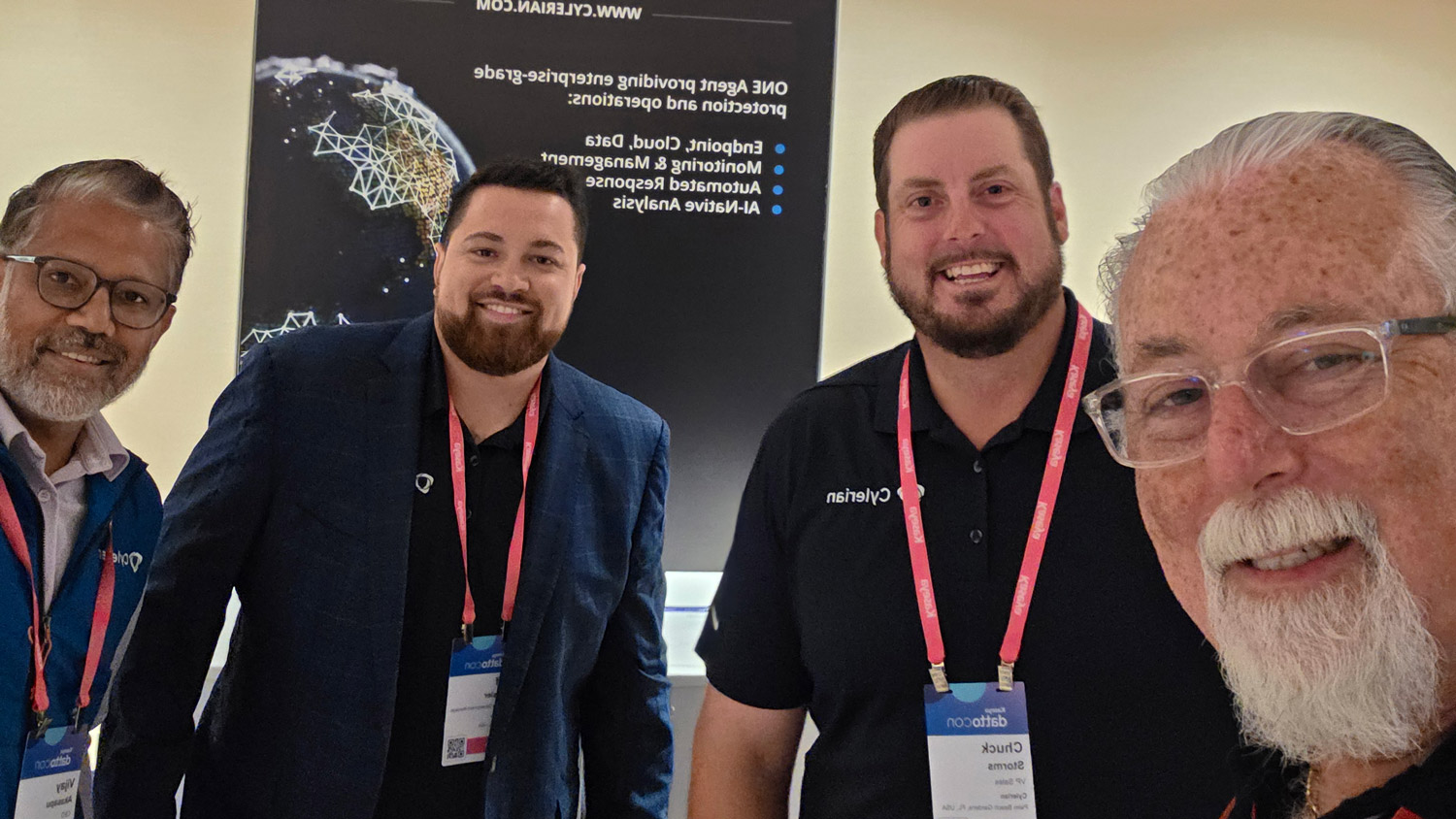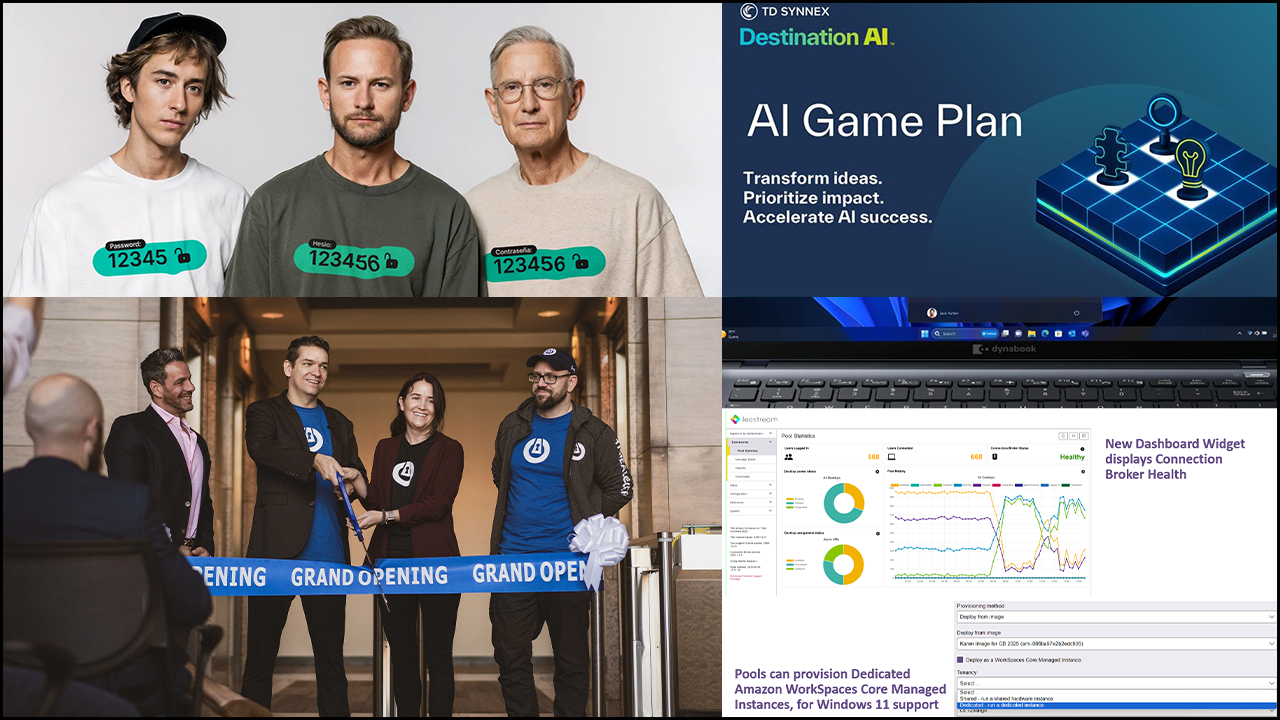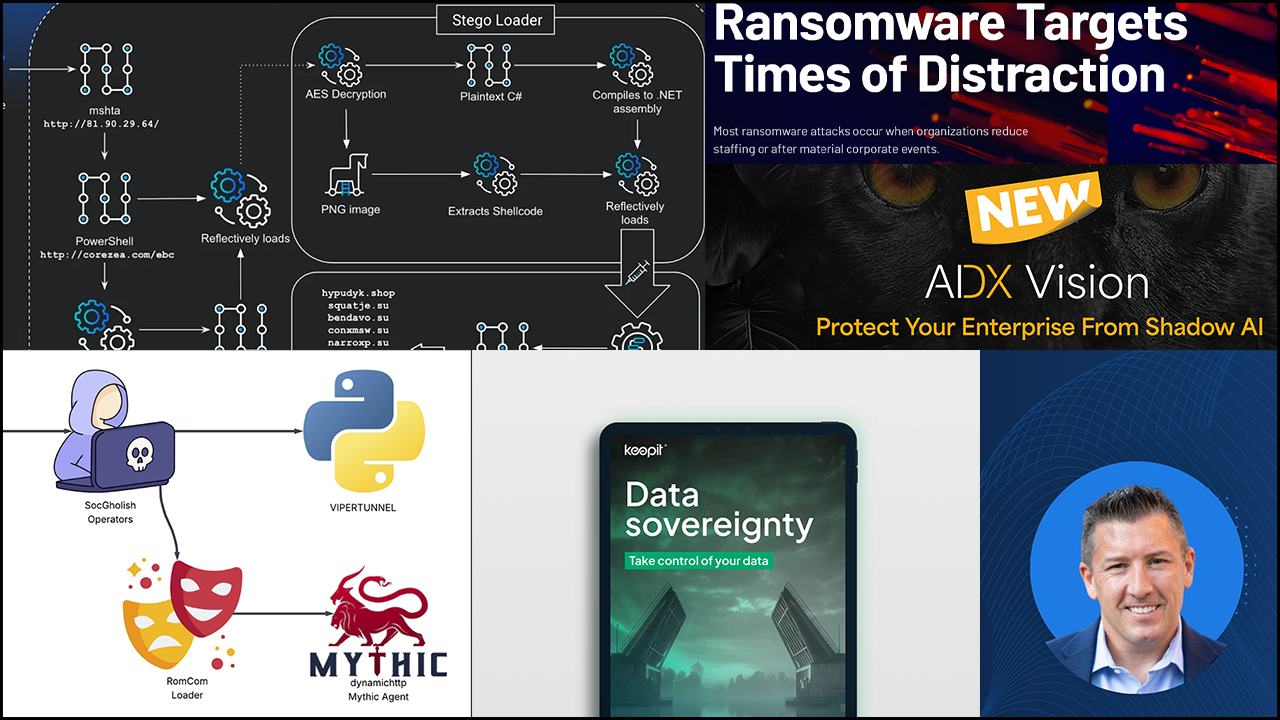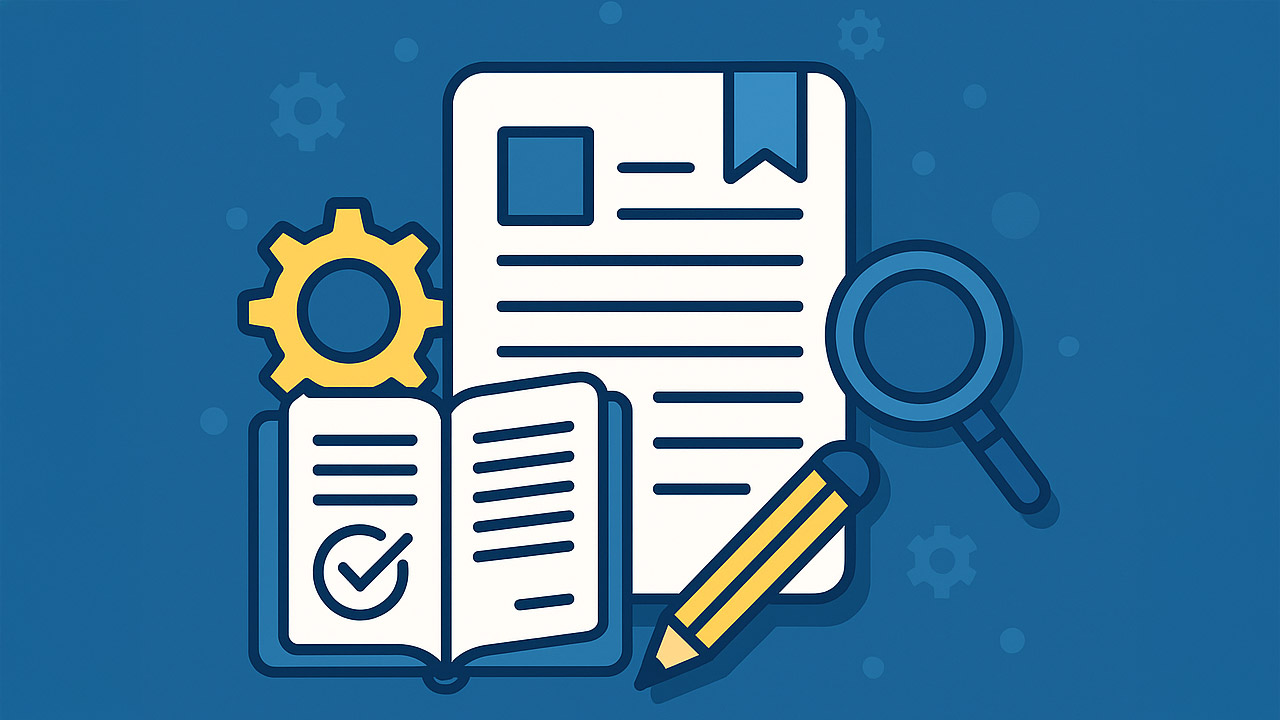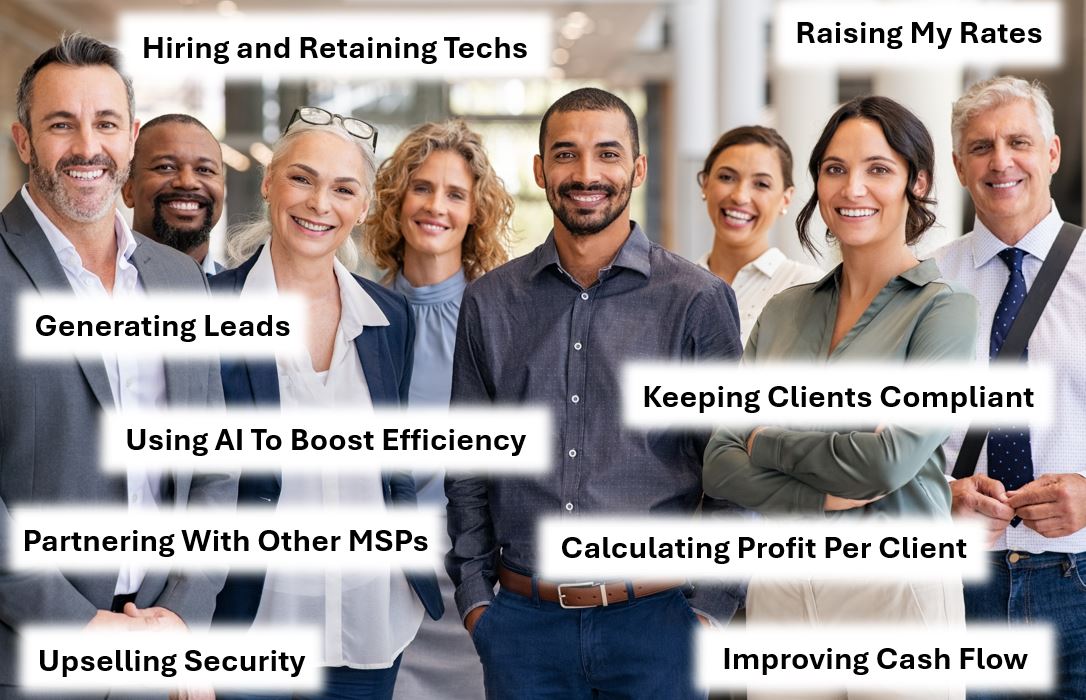Cybersecurity has always been a moving target for MSPs. Today, though, that target is moving faster than ever. AI-powered attacks, sophisticated phishing campaigns, and relentless ransomware groups are forcing IT providers to rethink what “good enough” security really means.
Yet, if you ask 10 different MSPs what advanced cybersecurity tools belong in the stack, you’ll get 10 different answers. That’s not necessarily a problem. Clients’ needs, compliance requirements, and budgets vary. But there are common threads that separate providers who are simply checking boxes from those building a truly resilient, Zero Trust strategy.
What does “advanced” really look like in 2025? ChannelPro asked numerous MSP leaders, security practitioners, and experts. Based on their responses, here are the tools and approaches that every IT provider must consider.
Start with Frameworks, Not Just Tools

Anthony Oren
Simply choosing a popular tool or stack doesn’t automatically make an IT service provider an MSSP expert at using it effectively, according to Anthony Oren, CEO of Nero Consulting. He advises starting with a framework like the NIST Cybersecurity Framework, then build from there. “After that, select one vendor stack, such as Kaseya, which is what we did.”
It’s a reminder that tools are only as good as the processes wrapped around them. Without structure, MSPs risk building a hodgepodge of overlapping solutions. These look good on a proposal, but fail to deliver consistency, accountability, or measurable outcomes.
Encryption, Testing, and Logging: The Basics Still Matter
Too many IT providers try to get by with the least possible tools, argued Rebecca Herold, CEO and cofounder of Privacy & Security Brainiacs. Worse yet, she said some are experimenting with untested and often faulty, erroneous, and unsecure AI tools.”

Rebecca Herold
Instead, Herold pointed to six must-haves that are surprisingly absent from many stacks:
- Strong encryption and modern hashing, such as SHA-3 and Argon2, not MD5 or RC4
- Software testing tools that are validated but still allow for human oversight
- Centralized log analysis, threat detection, and automated incident response (Splunk, QRadar, Sentinel)
- Network security monitoring tools beyond the bare minimum
- Automated update tools that go further than vendor freebies
- Continuous security education, with training designed to challenge and measure comprehension
These might not be flashy, but they’re foundational, Herold emphasized. Skipping them creates holes that no next-gen AI widget can fill.
Detection, Response, and Recovery

Esteban D. Blanco
For Esteban Blanco security isn’t about piling everything into one basket. “Separating antivirus and EDR could offer you a higher level of protection,” noted the chief geek officer of Blanco I.T.
Tools like Huntress bring fast mailbox monitoring into the mix. Equally important is disaster recovery.
“Having a robust and secure disaster recovery plan in place is essential,” he shared.
That theme echoed across several experts. Take Paul Knittle, founder and president of MTMG, who breaks it into three points:
- On Automation: “If a tool doesn’t cut MTTD and MTTR, it’s shelfware.” Connecting EDR → SIEM → SOAR to drive quarantine and token revocation without waiting for human intervention is critical.
- On Ransomware: “Ransomware isn’t a malware problem; it’s a recovery problem. Tested restores from immutable, isolated backups in hours, not weeks, are the difference between an incident and a business outage.”
- On ROI: “Least privilege and conditional access don’t just prevent breaches. They shrink tickets, downtime, and insurance pain in the same stroke.”
Or as Tech Rage IT Co-founder Matt Rose put it: “Some level of a SOC product to go along with EDR is basically a standard at this point.”
Where to Begin an Advanced Cybersecurity Approach
With so many options — and acronyms — where should MSPs start? The consensus:
- Framework first. Build around NIST, CIS, or a compliance-driven framework.
- Cover the basics. Encryption, patching, testing, backups, and training aren’t optional.
- Layer detection. EDR, MDR, SOC, and XDR need to talk to each other.
- Lock down identity. Utilize least privilege, conditional access, phishing-resistant MFA, and PAM.
- Secure recovery. Have immutable backups, tested restores, and SOAR-driven playbooks.
- Govern risk. Include authorization and governance to align business owners with business risk.
MDR, XDR, and 24/7 Eyes

Scott Verbus
The one acronym dominating conversations these days is MDR. “It’s essential that MSPs provide their customers with the very best protection solution,” noted Tony Anscombe, chief security evangelist at ESET. That means deploying AI-native MDR platforms enriched with curated threat intelligence and monitored around the clock.
Scott Verbus, founder and owner of Linear 1 Technologies, agreed. This underscores the need for a SOC solution “with a highly recognized provider” ” that’s tuned for MSP realities, he said.
Meanwhile, Vertek Corp. COO Ron Hruby pointed to extended detection and response (XDR) as “an indispensable tool.” It consolidates noisy, siloed alerts into a cohesive attack narrative.

Brian Weiss
MSPs like Brian Weiss are putting it into practice with a mix of EDR, ZTNA, and XDR. Of course, with extra guardrails, added the CEO of ITECH Solutions. “ThreatLocker is indispensable in our stack. Its application allowlisting blocks all unapproved executables by default, stopping ransomware and zero-days cold.”
Evolving Identity and Access
Identity is increasingly the new perimeter. Experts argue it’s where MSPs should double down. Steve Meek, CEO and founder of The Fulcrum Group, said the basics — asset inventory, patching, EDR, MFA — are now table stakes.
All the while, MSP+ Co-founder Adam Bielanski highlighted identity protection beyond MFA, like phishing-resistant authentication, conditional access, and identity threat detection and response. He also pointed to external attack surface management and SaaS posture management for Microsoft 365 and Google Workspace.

Luis Alvarez
And don’t forget access, added Luis Alvarez, president and CEO of Alvarez Technology Group. VPNs, even with MFA, “are being exploited by cybercriminals and nation state actors,” Alvarez insisted. He recommended that MSPs move their clients toward Zero Trust network (ZTN) systems.
The Human and Governance Layer
Technology isn’t the whole picture. Compliance Scorecard CEO and Founder Tim Golden made the case that the most advanced function isn’t detection, but governance. “Authorization means pushing accountability back where it belongs: onto the business owner.”
Without it, every risk becomes the MSP’s fault. With it, accountability is shared, risk is documented, and MSPs avoid becoming the scapegoat. Or as Golden put it, “Advanced security isn’t just about detection; it’s about governance.”

Larry Walsh
Similarly, Channelnomics CEO Larry Walsh cautioned providers not to blindly chase new tools. The real question, he said, is whether your stack “addresses the needs of your customers while balancing the costs to their businesses and the affordability relative to the value return.”
Playbooks, People, and Practice
Technology may power detection and response, but people and preparation determine how effective those advanced cybersecurity tools really are.

Nate Sheen
Astoria CEO Nate Sheen stressed the value of incident response playbooks combined with SOAR. “Instead of scrambling during a cyberattack, MSPs should have and follow a pre-built plan. Isolate compromised devices, disable malicious accounts, alert stakeholders, and begin recovery … all automatically.”
That, paired with the right education, governance, and frameworks, turns advanced tools into advanced outcomes.
Steps Above ‘Good Enough’
MSPs don’t need every tool under the sun, but they can’t afford to underserve either. As attacks escalate, clients will demand more than “good enough.”
Those who invest in the right mix of advanced cybersecurity tools, balanced with frameworks, governance, and recovery, will be the ones that keep their customers safe and thriving.
As ChannelPro’s online director and tech editor for over a decade, Matt Whitlock has spent years blending sharp tech insight with digital know-how. He brings more than 25 years’ experience working in the technology industry to his reviews, analysis, and general musings about all things gadget and gear.
Featured image: iStock




